Magnequest B7-15K M4 and Nickel
When designing for a preamplifier a low output impedance can be of many advantages. This can be done through the use of clever circuits such as a cathode-followers or (step-down) transformers. The latter has my preference based on the natural character the music will be replayed with despite having a less good measured response compared to well designed cathode followers. Ofcourse the transformer has to be of very good quality and material. When talking about these line-out transformers choice has to be made whether these shall handle DC-current or not. This DC handling is of importance in design and mostly determines the size since an airgap has to be implemented on the core. If no DC has to pass the core things get less difficult and size can be kept small. However a capacitor has to be used to block that DC. Now-a-days very good capacitors are available so that should be no problem. Looking for these so called Parafeed transformers Magnequest has a good reputation in designing these. Prices are acceptable and since sizes are almost small, post and package to the Netherlands is acceptable. So I wrote Mike an email ordering a pair of B7-10K's and Mike replied:
I could build you a pair pretty quickly with M4 (often called High B) with slight up charge. I would need to check stock to see if I have any M6 lams. I would recommend the M4. You would also have a choice between brass (option at extra cost) or steel channel frames. I wish more people would try out the M4 M6 lams. Since you have nickel B7's I would be interested in your evaluations after allowing the units to break in.I told him indeed some Nickel B7's were used before but those were B7-10K, so Mike again replied:
Would be happy to build you some B7-15k's with core materials of your choice. And I think it would be neat for someone to compare the different materials for sound qualities. For hookup. Remember that the "dot is hot" (+) from an AC point of view. Give each unit as much as 100 hours of break in.So a couple of weeks later I received the package containing 2 pairs of B7-15K: one pair with M4 lamination and the other with Nickel lamination.
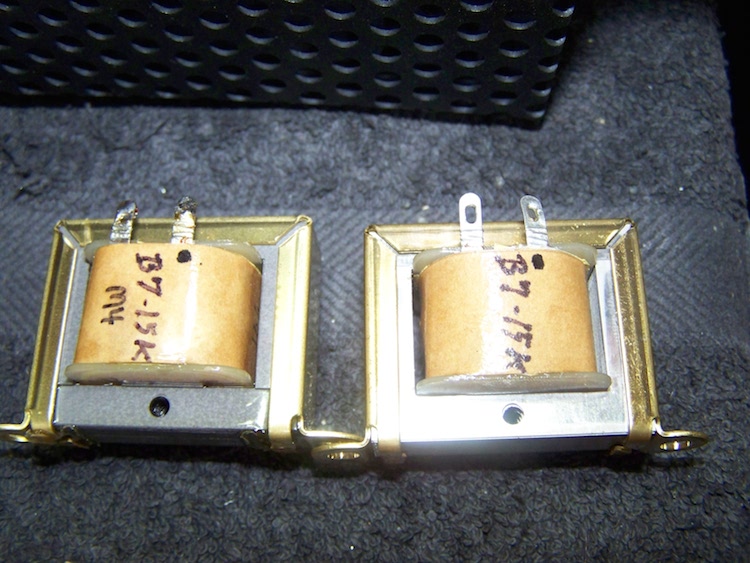
On the left the M4 lamination..
Preamplifier.
The B7's were destined for a chokeloaded 485 (Sparton) Preamplifier which was already up&running but capacitor coupled thus having high output impedance and
lots of gain (too much in my system). Putting in the B7's was easy because of their size, a 2uF coupling capacitor proved to be of the right value. So ample minutes
later everything was ready for playback. Frequency response was from 8hz (-1dB) up to 50Khz (-3dB) with some small resonation points above that. To my experience
that is really okay and is prove of good design.
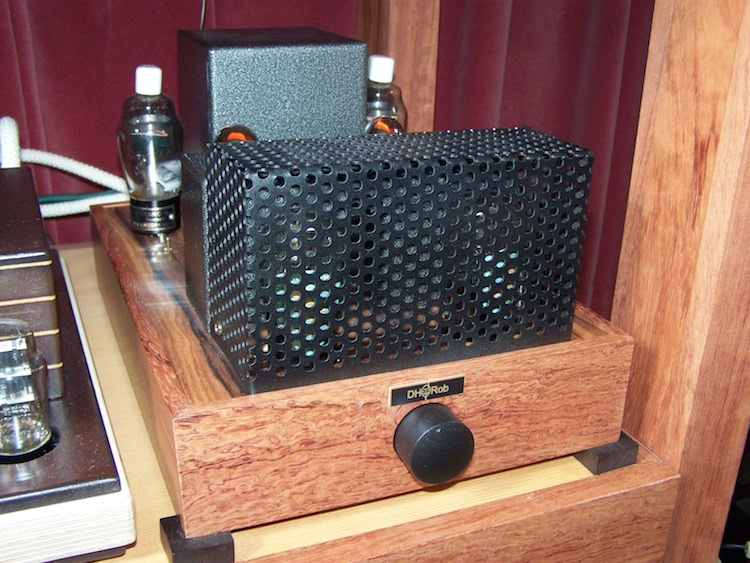
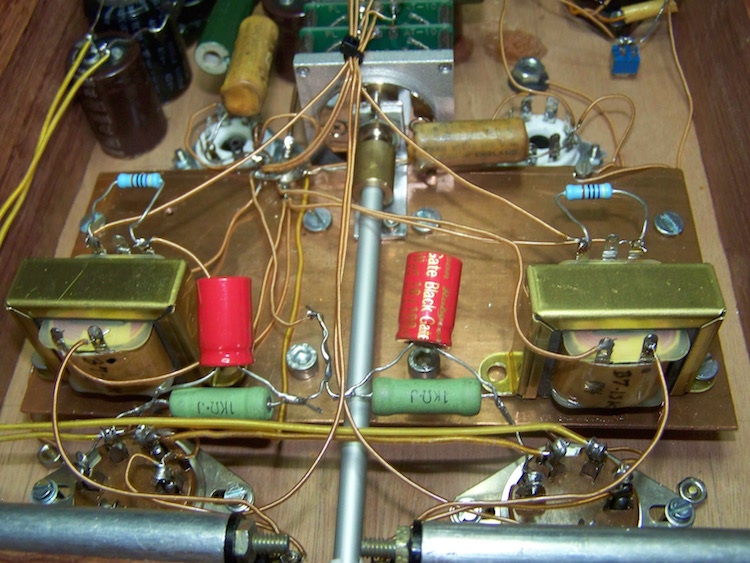
M4 laminated. As you can see in the picture above I started of with the M4 laminated pair and since Mike had advised a 100 hours break-in period I let them run for about 50 hours before my curiousity was that big that I had to listen.. Although it was only at the half of the breaking in time, I immediately liked very much what I heared. Gain was now appropiate for my system and also residual hum and noise was noticeable less because of the step-down ratio of 5.48:1. Bass was good and highs were there as they should be: Detailed but not harsh in any way. Soundstage was very much okay and naturalness in tone was very good. I enjoyed it very much and let it run for many more hours than the 100 hours Mike suggested before replacing the M4's by their Nickel brothers.
Nickel laminated.
Several weeks later (Mike already emailed me several times) I replaced the M4's..
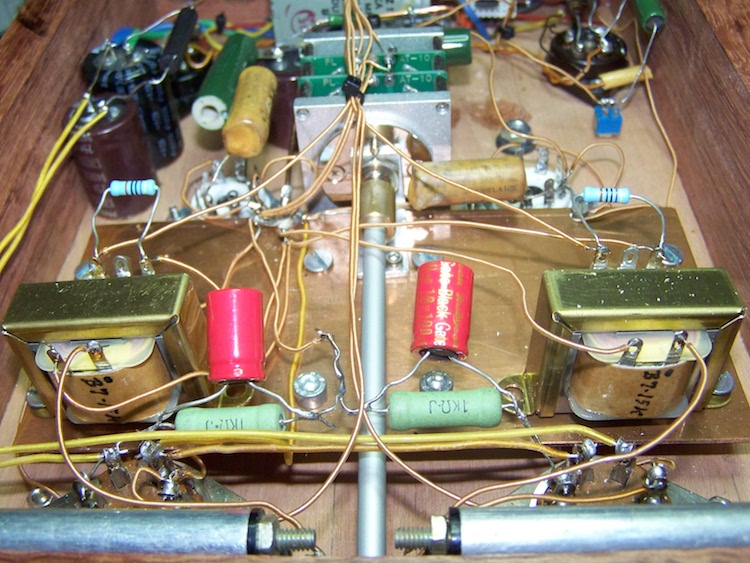 Now the painfully 100 hours break-in period emerged again.. I decided to go for the 50 hours as I did with the M4's before to keep things straight. Since I was so
satified with the M4 performance I was very curious about the differences, if any..
For sure there was no difference in measurements other than slightly differences which I also noticed in between the pairs themselves. Also the 50 hours+ break-in
period meant that I had to put in the M4 again not to rely too much on auditive memory. The Nickel B7's proved to be more revealing than their M4 equivalents.
More revealing in a sense that they are more analytical. Bass is still very much okay, highs are very refined and have a sort of positive sibilance that makes
pinpointing (soundstage) very accurate. Tone was okay, but in this aspect I had a slight preference for the M4's more natural tone.
Now the painfully 100 hours break-in period emerged again.. I decided to go for the 50 hours as I did with the M4's before to keep things straight. Since I was so
satified with the M4 performance I was very curious about the differences, if any..
For sure there was no difference in measurements other than slightly differences which I also noticed in between the pairs themselves. Also the 50 hours+ break-in
period meant that I had to put in the M4 again not to rely too much on auditive memory. The Nickel B7's proved to be more revealing than their M4 equivalents.
More revealing in a sense that they are more analytical. Bass is still very much okay, highs are very refined and have a sort of positive sibilance that makes
pinpointing (soundstage) very accurate. Tone was okay, but in this aspect I had a slight preference for the M4's more natural tone.
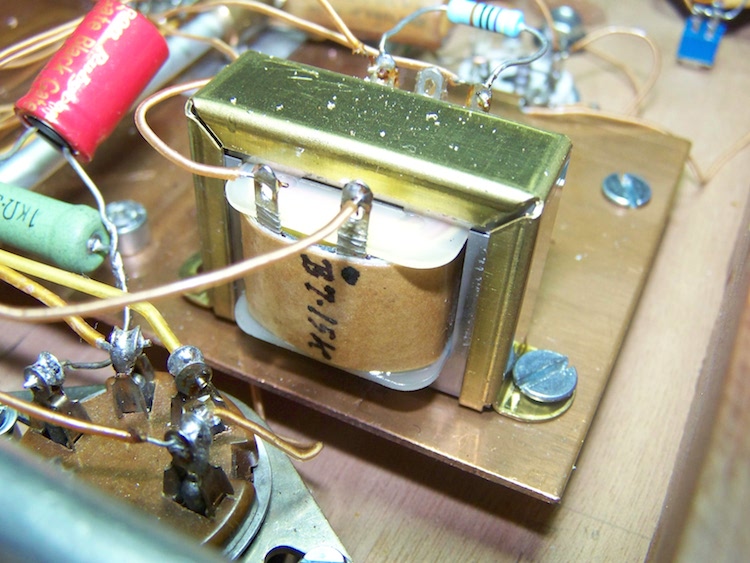
Wrap up..
So what is good and what is better? Well, if I may advise:
I would ecommend going M4 if your preference is tonal naturalness and maybe if you have a very analytical system.
Nickel is more revealing but also a little less colorfull. So go Nickel if you fancy details and maybe if your system is somehow what less analytical.
See here for B7 series prices (I paid an extra 35 Euros on 2 pairs for customs).
